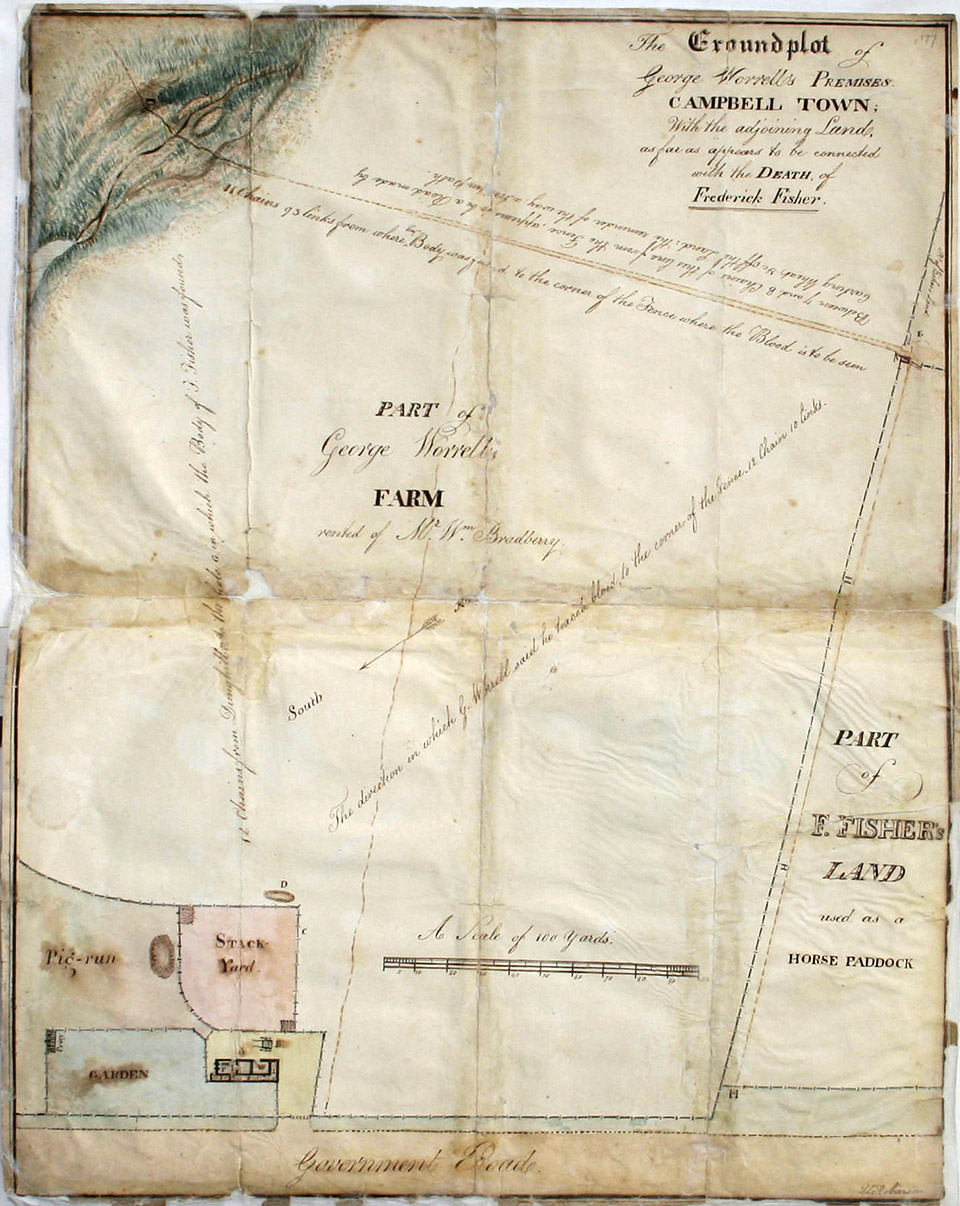The Dictionary of Sydney was archived in 2021.
Fishers Ghost Creek
Citation
Persistent URL for this entry
To cite this entry in text
To cite this entry in a Wikipedia footnote citation
To cite this entry as a Wikipedia External link
Fishers Ghost Creek
Fishers Ghost Creek runs through Campbelltown's Koshiga and Bradbury parks, and commemorates the murder of the convict Frederick Fisher in 1826.
Frederick Fisher
Fisher had been transported in 1818, worked for the convict authorities as a clerk and used his position to make business and social contacts. By 1825 he was a ticket-of-leave man with four farms, including one at Campbelltown on land between Bow Bowing Creek and the main road. Fisher's career was a modest convict success story until he turned to speculative building in Campbelltown. During a dispute with William Brooker, who had built the Horse and Jockey Inn for him, Fisher pulled a knife and used it. Anticipating a trial, conviction and a long imprisonment, Fisher gave a power of attorney to William George Worrall, another ticket-of-leaver who occupied a neighbouring farm. But when the case was heard, Brooker proved to be such a bad witness that Fisher escaped with a light sentence. He returned to Campbelltown and lodged with Worrall until 17 June 1826, when he disappeared.
Worrall claimed that his neighbour had gone 'home', but this was unconvincing, because Fisher was still a convict and risked arrest if he reappeared in England. Worrall attracted more attention when he began selling Fisher's belongings. He was arrested on suspicion of murder in September 1826, although no body had been discovered.
It was [media]the grisly circumstances of the discovery of the body that gave rise to the legend of Frederick Fisher. On 25 October 1826 two boys reported seeing bloodstains on a fence at Fisher's farm. When new searches uncovered a lock of hair and a tooth, the police called in Gilbert, an Aboriginal tracker from Liverpool. He tasted water in the marshy land and proclaimed 'white fellow's fat there', before leading the police to Fisher's grave on Worrall's land. Worrall was tried and hanged in February 1827.
The legend of Fisher's ghost
Fisher was certainly not the first colonist to be killed over debts or disputed property. But he was unusual because the sordid story of his murder gained a supernatural dimension. Rumours circulated in Campbelltown that the finding of his body was not accidental – and the story of Fisher's ghost has been retold in print since the early 1830s. The best-known version states that the body remained undiscovered until a local farmer named Farley was returning home from Patrick's Inn and encountered Fisher's ghost sitting on the rail at the bridge over Queen Street. The spectre beckoned to him and pointed back towards Worrall's land. According to the legend, it was the ghost that prompted the police search and the uncovering of the grave.
'Fisher's Ghost' has become an essential element of Campbelltown's collective memory: the story is re-enacted as part of a festival held there every year since 1960. For many years the name Fishers Ghost was attached to the reserve that was renamed Bradbury Park in 1965. The name was kept for the creek itself, but it too seemed to be dying until 2006, when Campbelltown City Council and the Campbelltown Arts Centre began restoring and revegetating the section that runs through the centre's land.
References
CA Liston, Campbelltown: The Bicentennial History, Council of the City of Campbelltown, Campbelltown, 1988
J McGill, V Fowler, and K Richardson, Campbelltown's Streets and Suburbs, Campbelltown and Airds Historical Society, Campbelltown, 1995
Campbelltown Macarthur Advertiser



